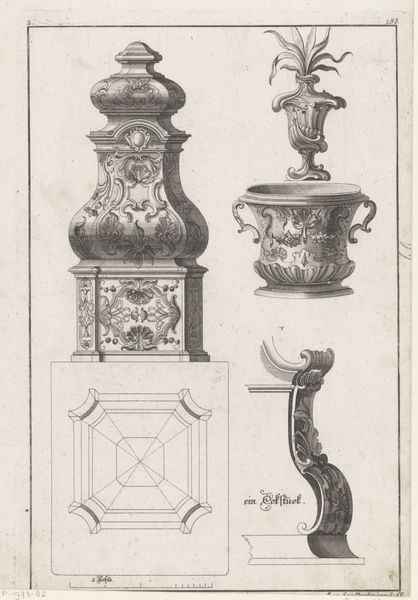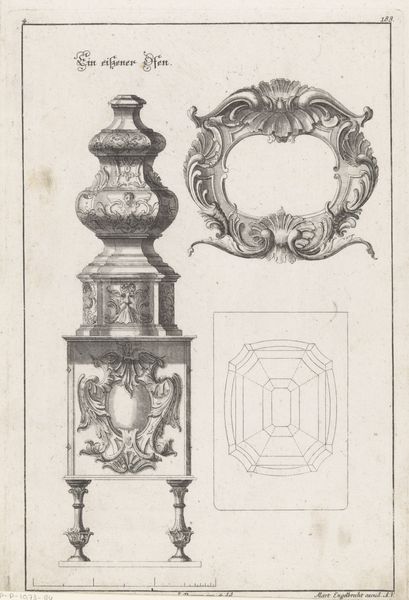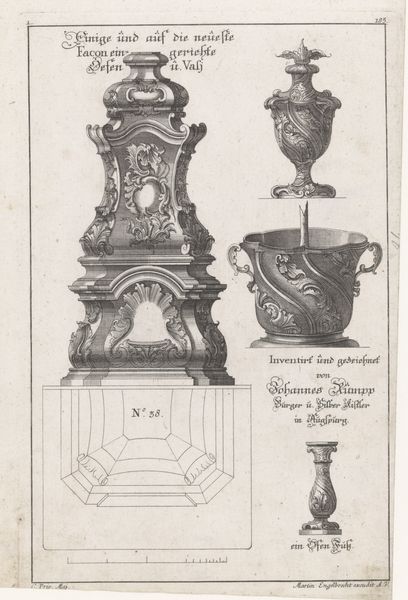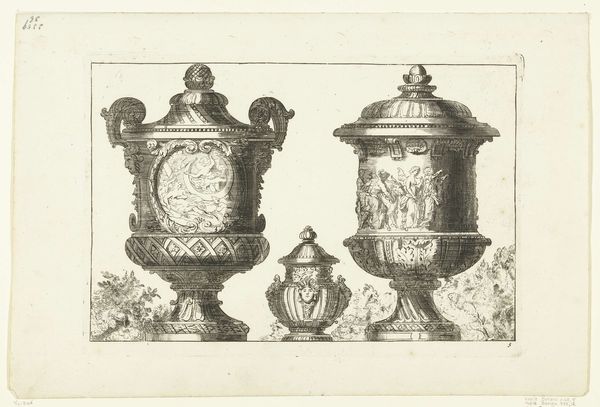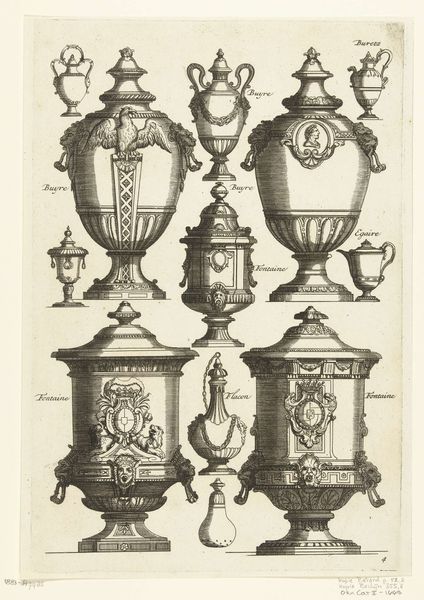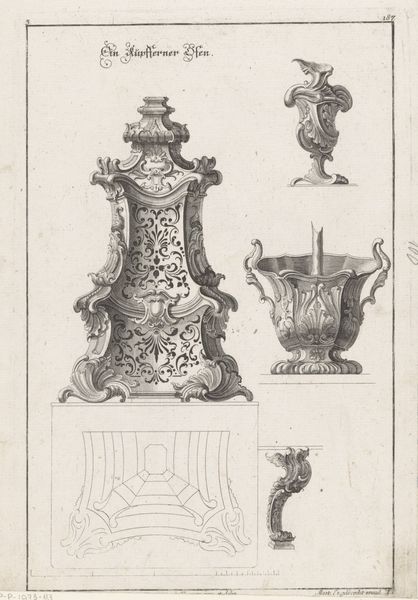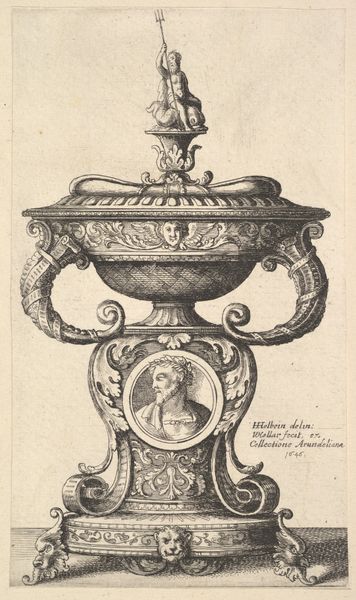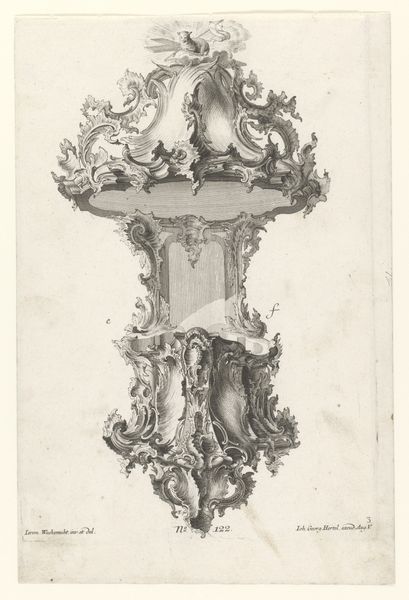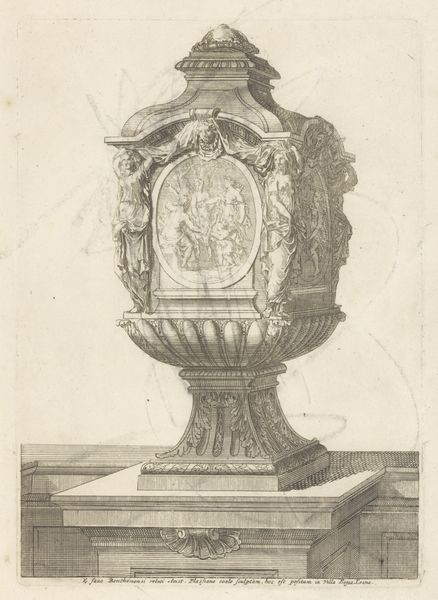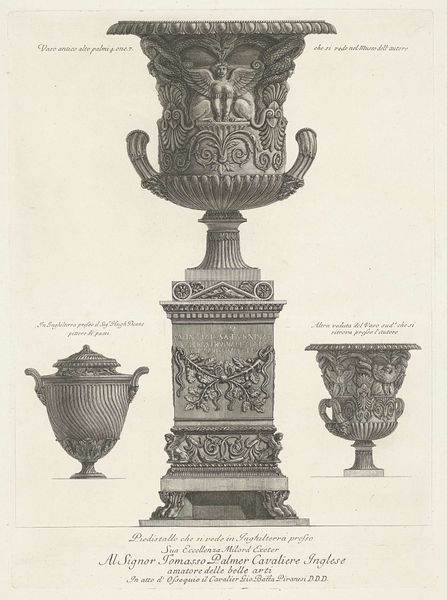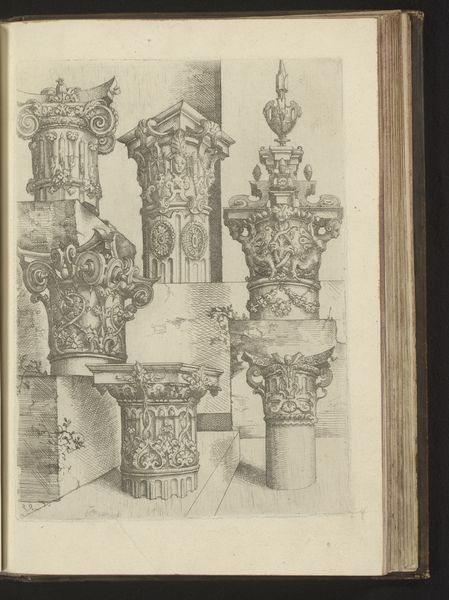
drawing, engraving
#
drawing
#
baroque
#
pencil sketch
#
old engraving style
#
vase
#
geometric
#
pen-ink sketch
#
engraving
Dimensions: height 296 mm, width 195 mm
Copyright: Rijks Museum: Open Domain
Editor: This engraving, “Kachel, vazen en voetstuk,” dating from sometime between 1712 and 1755, by Johann Rumpp, showcases several elaborate designs. It reminds me a bit of architectural blueprints. How do you read this work? Curator: Consider the process: engraving, multiple impressions, dissemination. This wasn't necessarily meant to be 'art' in the high art sense, but a pattern book, a resource for artisans. What materials were readily available, and how did those constrain or enable the possibilities of the final product? Editor: So, you're saying that the artistic value resides in how effectively it could be replicated into physical objects? Curator: Precisely! And further, how these designs speak to the social context. Who was consuming these ornate vases and pedestals? What does that tell us about wealth and status in that era? What does the labor look like required to create the source material, in the drawing and engraving, versus the products it portrays? Editor: That’s fascinating! I hadn’t considered it from the perspective of the craftspeople using these designs. The stark medium really highlights the intricate labor involved. Curator: Exactly! And notice how the printmaking enables that labor to be shared, democratized in a sense. The 'artist' becomes a facilitator of material culture. Editor: This perspective shifts the focus away from the artist's individual genius to the collective effort of production and consumption. Thank you for sharing your thoughts! Curator: It was my pleasure. This deepens my own understanding of art's historical implications.
Comments
No comments
Be the first to comment and join the conversation on the ultimate creative platform.
